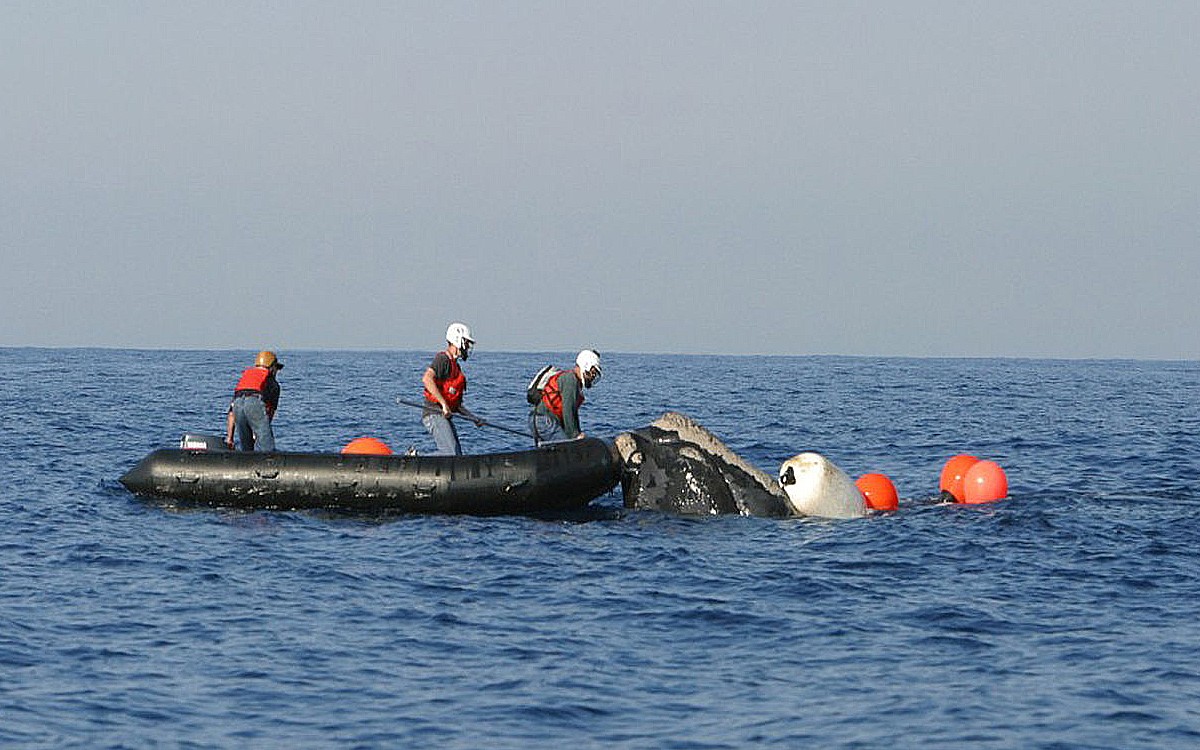
By Andrea Treece, Earthjustice | This is the time of year that one of the rarest creatures on the planet — the North Atlantic right whale — heads south, en masse, to the Atlantic waters off our southeast coast. The species is on the verge of extinction, with only about 400 North Atlantic right whales left. Less than 100 breeding females remain.
The whales migrate 1,000 miles south from Nova Scotia and New England to give birth to their calves in the waters off South Carolina, Georgia and Florida.
At least we hope they give birth. Two years ago, zero right whales were born. Last year was better, with researchers counting seven calves born. But hope dimmed when 10 whales were found dead last summer at the northern end of their migration route. All of them were killed by human activity. In just the past two years, 30 whales have died from ship strikes or by getting entangled in fishing gear — the leading causes of their mortality.
These deaths are preventable.
This fall, Earthjustice and the Conservation Law Foundation won a major legal victory to keep right whales safe from dangerous fishing gear. A federal judge ruled that the National Marine Fisheries Service violated the Endangered Species Act by opening 3,000 square miles of protected habitat east of Nantucket and Cape Cod in 2018 to gillnets — giant walls of mesh suspended in the water that entangle anything that swims into them, including right whales. In a move that will help more right whales survive, the judge ordered the area closed to that gear.
On the whales’ southward journey down the Atlantic seaboard, they face a different threat — also preventable — seismic airgun blasting. Five private corporations want to use seismic airgun blasting in the Atlantic to search for oil and gas under the ocean. The Trump administration gave approval a year ago for the companies to “incidentally, but not intentionally, harass marine mammals” in a huge swath of the Atlantic Ocean stretching from Virginia to Florida.
The noise blasts from this activity are as loud as jet engines, and they repeat about every 16 seconds for days, weeks or months. Underwater, the sound can carry as far as 2,500 miles.
This is a big problem for right whales and other sea creatures which rely on sound to communicate and find prey and mates. The whales have no way to protect themselves against the punishingly loud sound. Studies around the world show that air gun blasts can kill scallops and other shellfish, reduce commercial fishing catches, make sea turtles erratic, and interfere with whales’ ability to communicate and feed.
It’s hard to imagine how a newly born baby right whale could be expected to cope with continuous blasting noise. Or how a mother could communicate with her calf to make sure she’s not separated from her vulnerable new baby. It’s cruel and unnecessary.
After the Trump administration gave approval for the private companies to start air-gun blasting, we and others went to court to stop it. Nine conservation groups, along with many states and municipalities along the Atlantic coast, filed a legal challenge against the permits because they violate the Marine Mammal Protection Act [authored by the late U.S. Sen. Fritz Hollings of S.C.], the Endangered Species Act, and the National Environmental Policy Act. The case is ongoing, and the plan for air gun blasting has been on pause — for now.
To understand how critical it is to keep North Atlantic right whales safe from disturbances like this in the only calving ground they have on the planet, consider that a female right whale doesn’t breed until she’s 10, and her pregnancy lasts a year before the calf is born. Researchers report that right whales would normally have a new calf about every three years. Today, the continued stress on the whales has slowed reproduction, and now the females only have calves about every six to 10 years. In the last three calving seasons (2017-2019), there were only 12 births.
In the face of this biological reality, we must do all we can to help these magnificent creatures survive, rebound, and renew their place in the ocean ecosystem.
Andrea Treece is a San Francisco-based staff attorney for Earthjustice, a national nonprofit law firm that provides free representation for people and groups who are fighting to protect the environment. This article originally appeared in the Charleston City Paper.
- Have a comment? Send to: feedback@statehousereport.com.
















 We Can Do Better, South Carolina!
We Can Do Better, South Carolina!
Pingback: Charleston Currents – 12/9: Celebrating conservation; Boomers and boomlets; Whales
Pingback: Charleston Currents – NEWS BRIEFS: Clock ticking for northern right whale
It is the time our President must realize the value of all wildlife on our planet. In this instance, the harm that hurts a valuable species is absolutely despicable and should not be allowed to forward. The companies that are pushing this action should be run into the ocean and sink and drown. Good Ridence!!
Please pray and protect our whales all animals that are left before it is too late
Thanks to EarthJustice for their work in helping whales and all sea creatures to live, in spite of inhumane governmental decisions to destroy them.